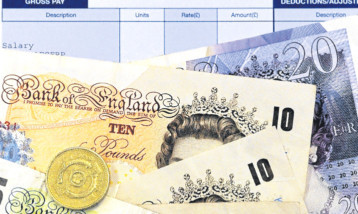An extra 50p in your pocket for every hour worked.
If you are one of the estimated six million UK workers currently being paid the national minimum wage, then that is the not-insignificant prize that awaits from Friday.
For a 40-hour working week, that’s an extra £20 in the hipper as a result of the new national living wage.
It’s not life-changing money by any means, but it is enough to make a difference to many struggling families. It’s enough to put some food on the table, keep the electricity meter fed that little bit longer, or replace those school breeks that have inevitably arrived home with a hole in the knee.
But it is not enough to lift millions off the breadline.
Personally, I’d like to have seen the UK Government immediately push the bar higher than the new mandated living wage of a £7.20 minimum.
And I’d like to see quicker pay progression in the years to come.
George Osborne’s plan is for the national living wage to rise to around £9 the equivalent of 60% of media earnings by 2020.
In an economy with sustained growth, I don’t think it is too much to hope for a minimum of £10 per hour by the end of this decade.
The Living Wage Foundation a group which has long campaigned for higher pay for lower earners would like to see an immediate minimum of £8.25 an hour in the regional UK and £9.40 in London.
While the foundation and the UK Government obviously disagree at the correct point to pitch the living wage, it is another difference in their policy that caught my eye: the new national living wage will be paid in full to workers over the age of 25, and not in the first year of an apprenticeship.
Younger workers doing the same or an even better job as older colleagues will only receive the same paycheck if their employer volunteers to pay them at the higher rate.
I suspect if that happens at all, it will be the exception rather than the rule.
So, why £7.20? I suspect that figure has a lot to do with industry lobbyists putting forward the Armageddon argument that higher wages will lead to job losses and lost productivity.
Labour-intensive industries like the hospitality sector have a lot to lose by higher wages, as do private healthcare operators and retail.
You can bet your bottom dollar that representatives of these industries and others made their views known when the decision was being made.
I understand why firms may be concerned at their overheads rising, especially in uncertain times.
But for many shops and pubs, their staff are their business. Without them, they don’t have a chance at success.
These staff deserve to be treated well and paid a decent amount for their efforts.
Go back 17 years and the UK’s first regulated national minimum wage of £3.60 for over 22s was about to be introduced. It was the subject of great debate, and the scare stories abounded.
But, like the Millennium Bug a few months later, the hype came to nothing.
On Friday, the lowest-paid workers in society will deservedly get a pay increase.
That happy event will not bring about a calamitous collapse.
The world will continue to spin.
